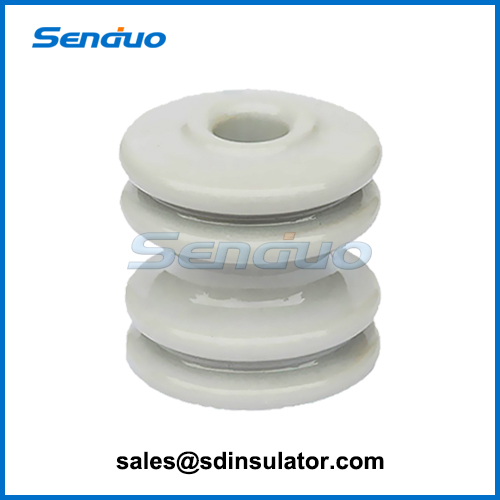There are several types of insulators in transmission lines but the most commonly used are pin type suspension type strain insulator and shackle insulator.
Ceramic pole top pin insulator schematic.
They are mounted directly on the pole or crossarm and bolted in place.
There is a groove on the upper end of a pin insulator for housing the conductor.
The part sec tion of a pin type insulator is shown in fig.
Their performance was superior to pin type insulators and by the 1960 s they found widespread use on power lines everywhere.
Pin type insulators pin type insulators or pin insulators are popularly used in electric distribution systems up to 33 kv voltage level.
Similar to their glass counterparts porcelain insulators date back to before the civil war for telegraph wires.
Pole top insulator pin is 20 length and includes 1 3 8 semi conductive nylon insulator thread.
Post insulators are one piece solid or hollow core porcelain columns with multiple petticoats or skirts from top to bottom.
As the name suggests the pin type insulator is secured to the cross arm on the pole.
There is a.
Hendrix vise top insulators are pin type insulators that incorporate a clamping mechanism into the top of the insulator to provide quick and easy conductor installation without the need for additional tie products.
They are secured on the cross arms of the pole to carry power lines.
Vise top insulators are molded from a proprietary blend of gray track resistant high density polyethylene.
In north america glass was always the predominate material for communications insulators but porcelain has become the standard for power distribution due to its greater strength and surface resistance.
Manufactured per ansi c135 22.
Mechanical strength of insulators insulators shall withstand all applicable loads specified in rules 250 251 and 252 except those of rule 250c and rule 250d without exceeding the following percentages of their strength rating for the respective insulator type shown in table 277 1.





























